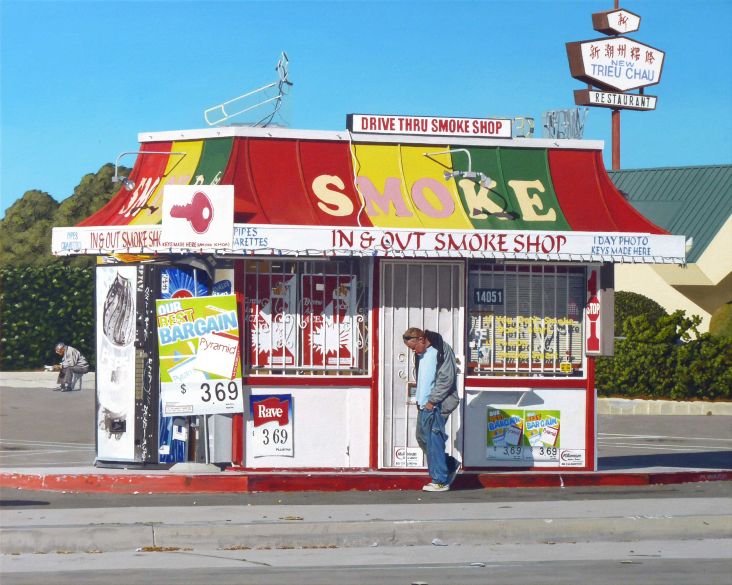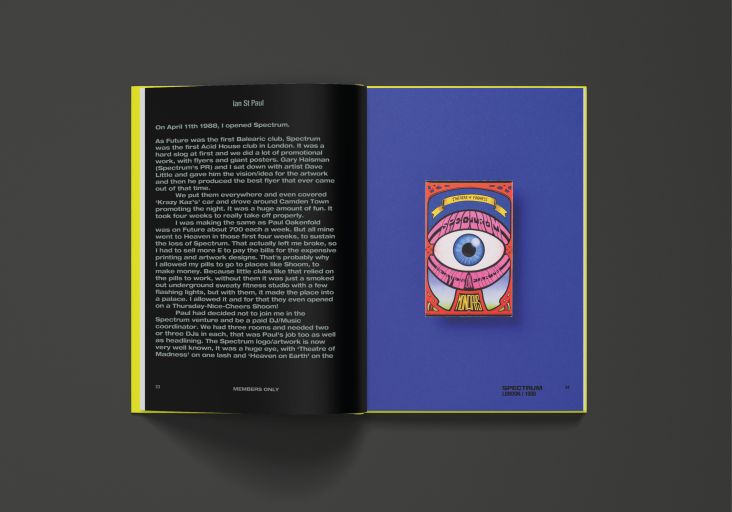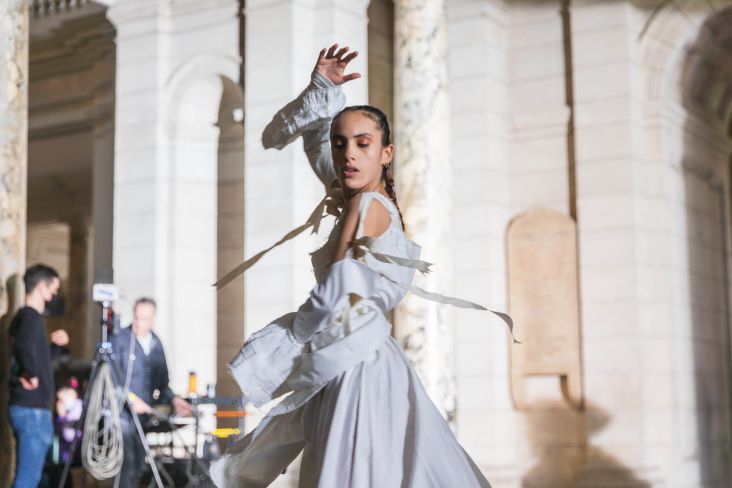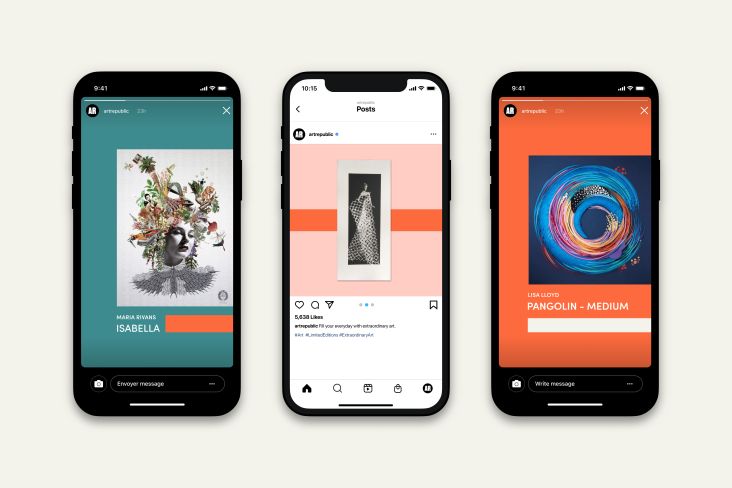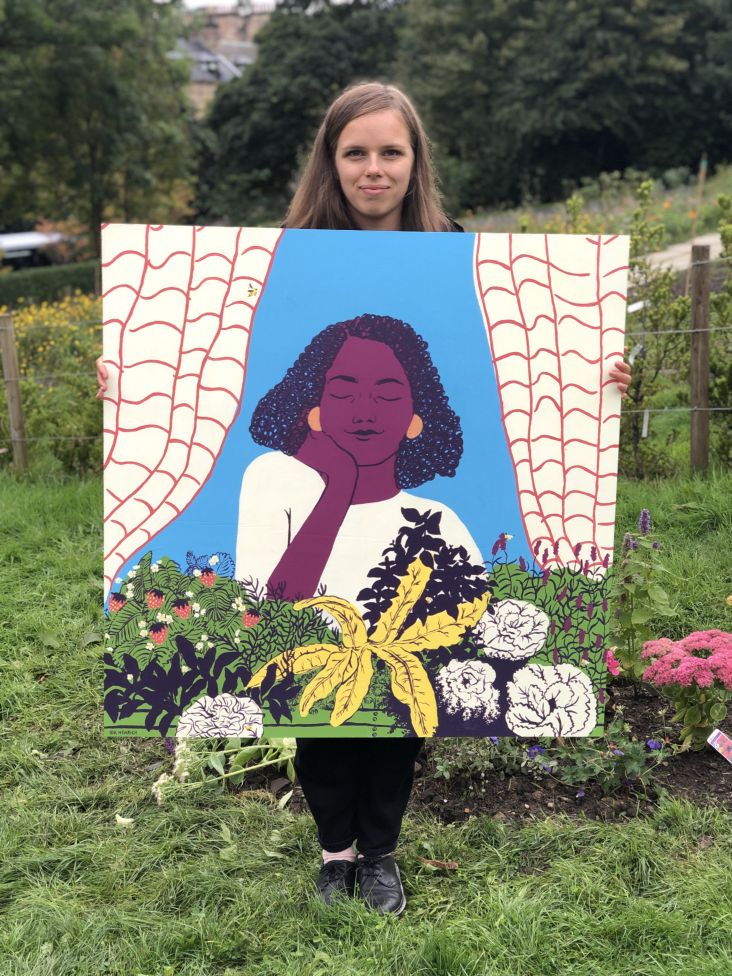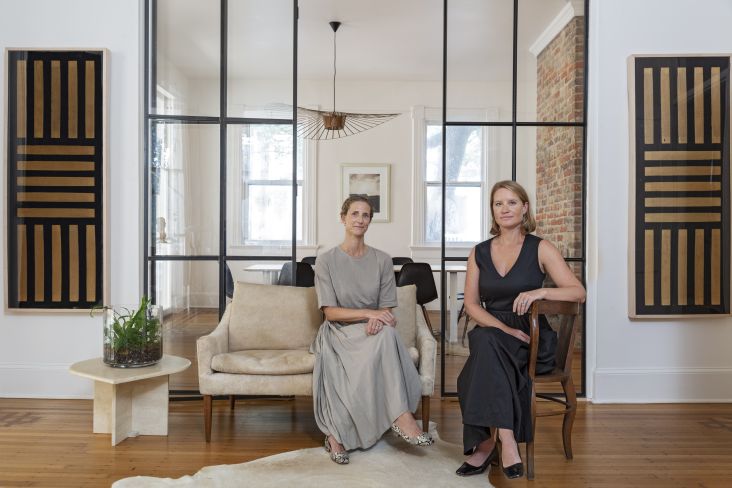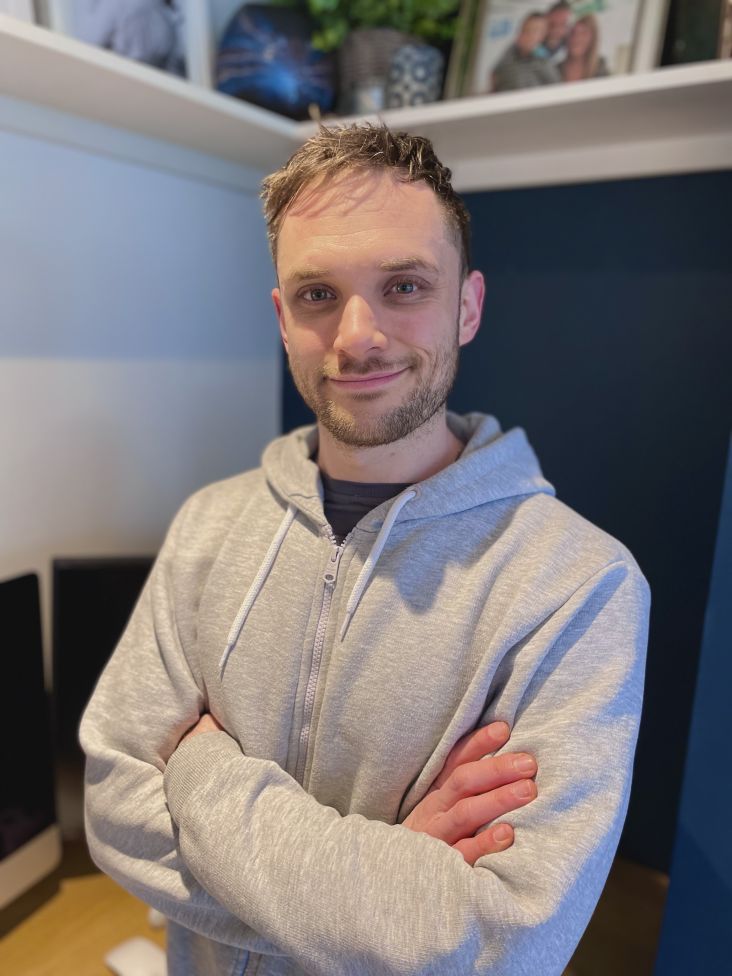Craig Berry on working for Nomad & how changing cities has helped push his creative skills & confidence
Fresh back from Amsterdam, where he previously worked as a junior designer for Superunion and later Ogilvy Social.Lab, Craig Berry is now part of the team at Nomad, the rising London studio founded by Stuart Watson in 2015. We discover more about his journey so far.
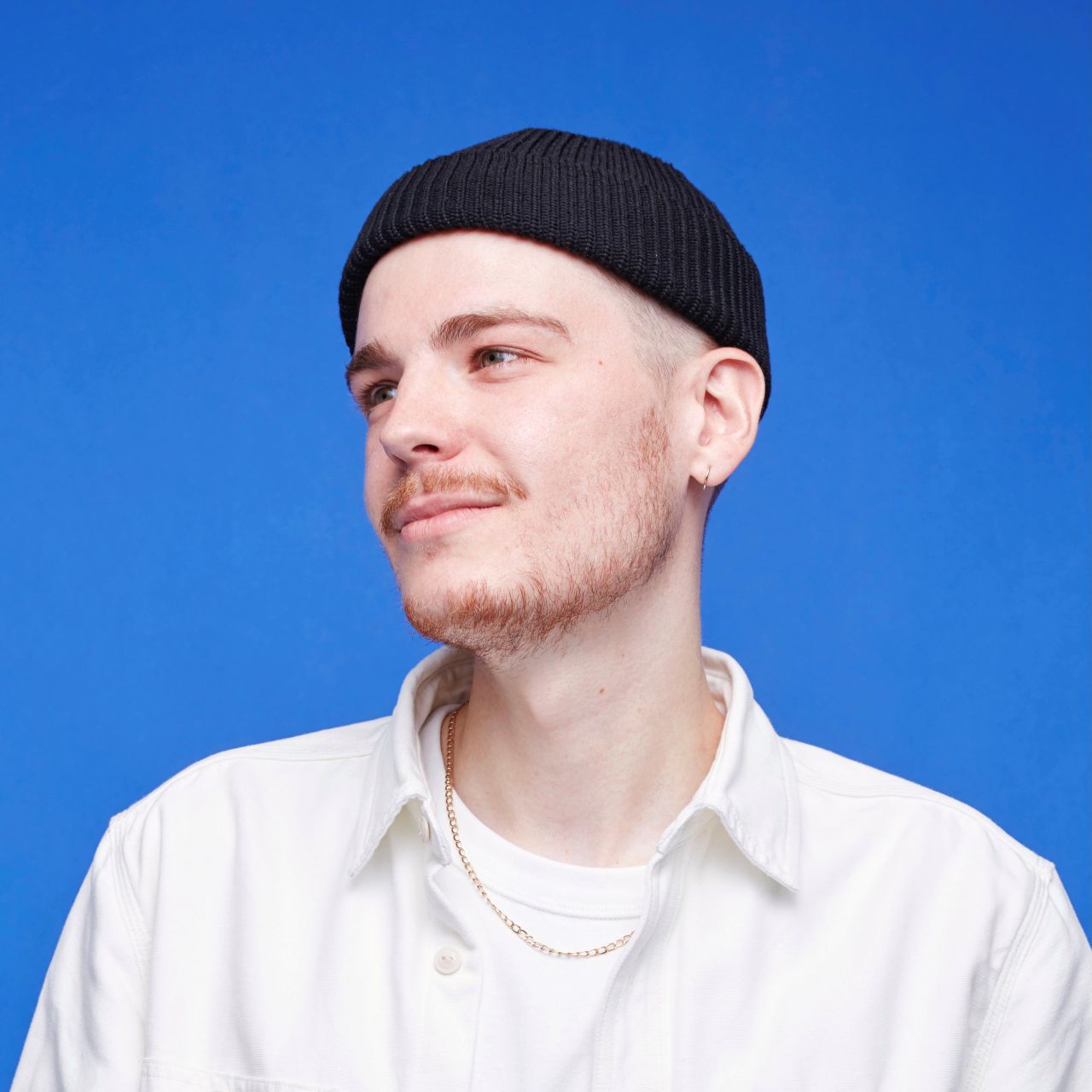
Craig Berry, designer at Nomad
A graduate in Graphic Arts & Design from Leeds Beckett University, Craig Berry calls himself a graphic designer and writer, as his work reflects a career spent traversing the two disciplines. During his time at Superunion, he was part of the team that scooped a D&AD Wood Pencil for work on Amsteldok. And he also enjoyed much success as a columnist for FONK Magazine, a respected Dutch publication that focuses on the creative industry. Notable articles include a piece on his favourite fashion brand, Carhartt, titled Work in Progress and thoughts on the 1980s British typographic revolution.
He joined Nomad in 2021, becoming part of a growing team of 20 people who are behind fresh identities for the Premier League, Disney+ and Sky Sports. It's a good move for Craig, having spent five years in Amsterdam working in 100-plus strong teams. The studio feels more like a family, he tells us, and somewhere he's been able to work for the likes of Cannes Lions, Sega, The NFL, and Nike, to name a few.
We sat down with Craig to chat about grabbing big opportunities with both hands, why moving to another country brings so much inspiration and how occasional loneliness can be a brilliant thing.
You're relatively new to the team at Nomad. How's it going?
Yeah, I've been here nine months already. If I'm honest, it feels a bit weird at the moment, as we go from a small startup to a studio with 20 people on the team. It's growing pretty fast, too, with more people joining and bigger clients coming in. It's a really exciting time to be here.
It's recently enjoyed its fifth birthday, two of which were spent during the pandemic. Did you start working for Nomad from home then?
No, it was last August, so things were just getting back to normal. Although many of us continued working from home for quite some time, there were definitely some people back in the studio. Today, in fact, was the busiest I've ever known it to be in the office. People are coming in for the first time, too. There's no specific reason why. I think everyone's just happy to be together in one space.
](https://www.creativeboom.com/upload/articles/f6/f6ab6768c5476a65258802c218757199b91e713a_944.jpg)
ASICS Tokyo 2020. Work for Ogilvy Social.Lab
](https://www.creativeboom.com/upload/articles/33/337a9105b51f18a8f2707c481ddbaa5a391477fa_944.jpg)
Amsteldok, D&AD Wood Pencil winner, work for Superunion
Was it because you were being interviewed by Creative Boom?
[Laughs] Yeah, that's exactly it. We have a Monday morning catchup every week where we update each other on what's happening, and I had to book the meeting room so everyone knew about our chat.
Do I detect a North West accent?
Yeah, so I'm originally from the Wirral. That little bit next to Liverpool.
I know it very well.
Yeah, it's funny because no one ever knew where the Wirral was when I lived abroad. But because Liverpool is such a big football club, everyone knew the local accent, so they would guess I was from that area.
Yeah, it's a distinctive accent, definitely. So looking back at your school days there, how did you get into design?
Well, I didn't formerly study design until I went to university. Up until then, I studied Fine Art. It was kind of my way into the industry. I used to love doing art – lots of painting, mainly in Abstract-Expressionism, throwing paint around. I liked the looseness of that. But at the same time, I enjoyed doing information and communications technology in school. I loved learning about computers.
I was naive and didn't really know what graphic design was back then. But then I did my A'Levels in ICT and Fine Art, followed by a foundation year, and that's when I discovered I could bring together art and computers into one. I kind of fell in love with it. During that time, I was venturing into Liverpool every day and seeing all these posters, flyers, and signage around the city, completely immersing myself in real-life art and design. The penny dropped, and I went on to study Graphic Arts & Design at Leeds Beckett University – a course that wasn't clean-cut graphic design. It was quite playful. There was a screen-printing studio, for instance, and a lot of freedom to experiment.
](https://www.creativeboom.com/upload/articles/fd/fd374801306cf5b3fef4c7fc7ccfb33d0c0a295b_944.jpg)
FONK Magazine cover, created at Superunion
](https://www.creativeboom.com/upload/articles/91/91937512f5c81b09e6d4facab42e19808202d087_944.jpg)
FONK Magazine cover, created at Superunion
It sounds ideal. Did it serve you well after graduation? What was your first "proper" job?
I finished university and had an internship start the next day at a cycling accessories company. I do a lot of cycling and so had a lot of connections in the sport, so that's how I found the opportunity. Whilst I was there, I got offered an internship at Vbat in Amsterdam, which has since rebranded with others to become Superunion. I spent a couple of months there and got offered a position as a junior designer, so that was my first "proper" job. It was quite daunting but a great experience.
Yeah, a young lad from the Wirral, quickly thrown in at the deep end and into another country?
Totally. I was there on my own at just 22 years old. Suddenly realising what agency life is like. Superunion was a huge 100-plus team, and I was one of the only young ex-pats there. I was quite alone, but weirdly, I quite enjoyed that.
As you were settling in Amsterdam, did you wander the city streets a lot?
Yeah, pretty much. Amsterdam is built for cycling, so I'd happily get on my bike and explore. There's so much amazing stuff to see everywhere. I wanted to learn the map of the city in my head if that makes sense. Getting out there and seeing places is better than looking at something on paper. You then slowly begin to realise where things are, like a great coffee shop over there or a nice art gallery tucked behind that alleyway. So yes, aimlessly cycling and wandering, you eventually find things and feel settled.
Yeah, I don't think you can feel at home somewhere until you've done that. It's a comforting thing, isn't it?
That's a good point. It's like making the place you've moved to feel more like home. That's what I'm doing in London at the moment. I'm still learning where places are. Again, I cycle around or walk a lot at weekends. It's really enjoyable.
Take every opportunity that comes your way. Say yes, even if it terrifies you. You never know where things might take you.
Looking at your time in Amsterdam, how did it change you?
I was there for five years, from 22 to 27, so I feel I grew up in every possible way in Amsterdam. When I moved there, I was quite shy and introverted, coming from a quiet base of friends in Leeds. But as I was then on my own, my confidence grew as I was forced to talk to lots of new people. It helped with how I present myself professionally, too, and how I discuss work with clients.
I also had a lot of time by myself. I was in a long-distance relationship with my now wife. But she was living in London, so I'd often be alone in the city. It gave me time to think about who I am, what I want to do, and what inspires me. I feel I developed a lot of my taste in music, fashion and design in Amsterdam.
When I first landed there, I can remember that I had one suitcase of clothes, and everything was crazily mismatched. I didn't know who I was. Then I started working, making money, and enjoyed buying clothes and developing my style. And now I love getting dressed and putting an outfit together. It's like the first brief of the day, opening the drawers and wardrobe – I really enjoy expressing myself through my clothes.
Did you also find inspiration for your work in Amsterdam?
Amsterdam has a really interesting creative scene. It gets called a cosmopolitan village because it's a lot of people in what is quite a small space. While most cities have different neighbourhoods, each with its own vibe, Amsterdam is compact, so there's a lot more stuff happening on every corner. It's incredibly vibrant. It's a creative hotspot, too, with many decent advertising agencies, such as Wieden+Kennedy and 72andSunny. These sort of big agencies love that lifestyle. Maybe it's the city's big ex-pat scene and multi-cultural population.
It's a good spot for anyone who loves cycling and creativity
Yeah, I'd encourage anyone to live and work in Amsterdam. I loved it. Everyone speaks English, so you don't have to worry about learning Dutch. Even though the odd pleasantries are always welcome, it's not essential. The people there speak such good English. It's not an issue. There's no language barrier. Everyone is so welcoming.
Why did you come back then?
I had been in a long-distance relationship for five years, so I was ready to move home and be with my partner. I also felt like I'd done everything I wanted to do in Amsterdam. It felt like the right time for a new adventure. I wanted to switch and find a fresh challenge.
Was there a moment when you were looking down a canal, and the wind changed, someone was throwing up in a gutter?
[Laughs] Yeah, I think so. I think Amsterdam started to feel quite small. My lifestyle became quite repetitive, and there was less "new stuff" to discover. London was calling, mostly as I wanted to be with my partner but also because I'd always wanted to live there at some point. It's a huge city. A fresh place to find exciting new things.
](https://www.creativeboom.com/upload/articles/1b/1bfe29887623946a488c227517d12ed41ec179a7_944.jpg)
FIVB Volleyball World, work for Ogilvy Social.Lab
](https://www.creativeboom.com/upload/articles/c4/c430b0f15992361e08f107d6954b425b5acbe2d8_944.jpg)
FIVB Volleyball World, work for Ogilvy Social.Lab
](https://www.creativeboom.com/upload/articles/99/99583b7a5a8b880774b04813b2ae0718f9fc6117_944.jpg)
FIVB Volleyball World, work for Ogilvy Social.Lab
What's the design scene like in London? I hear you all know each other and that it's quite competitive?
Yeah, it's definitely competitive. Everyone knows each other, too. Everyone has stories. People go from place to place, so it's a small pond. I feel like London is less diverse and multi-cultural than Amsterdam, if I'm being honest. I might be wrong. It might just be my experience. But we went to an event recently, and it definitely felt very male and white. I noticed it. Maybe it was a one-off thing. It's great at Nomad – it feels very diverse here. It's great to see.
So, what's it like working for Nomad?
It's genuinely exciting to work here. I've only ever known what it's like to work at huge agencies with 100 odd people. So to work at Nomad it's a different experience. Everyone knows each other and is so talented at what they do. It's almost daunting at times. Not that I feel, Oh, I need to perform now or anything [Laughs]. It's more about being part of a small team and feeling you can't let anyone down. No one has a bad word to say about anyone. A smaller, closer vibe. No office politics. It's really nice.
Living in London now, does it inspire your work? How are you getting settled?
On the weekends, I love to cycle and explore different areas. I like to take a reference book as inspiration, like something on architectural landmarks. This one book I've been reading lately focuses on high-rise council estates in east London. You discover when it was built, who designed it, and what it was created for. These are things any of us might cycle past but never give a second thought. Taking some effort to understand more about a city inspires you and makes a place feel more like home.
I also love listening to local radio stations in London. It's a great way to tap into a community and discover more about local artists and musicians, specifically in the capital. It's also a way of connecting with a city in a non-visual way.
 asked Studio Nomad and 14 other leading design studios to design a poster with it. Here is Craig Berry's contribution.](https://www.creativeboom.com/upload/articles/1c/1ca1b3e600bd489208305ad4d4649e66fb75ef20_944.png)
To mark the launch of F37 Blanka typeface, Rick Banks' foundry asked Studio Nomad and 14 other leading design studios to design a poster with it. Here is Craig Berry's contribution.
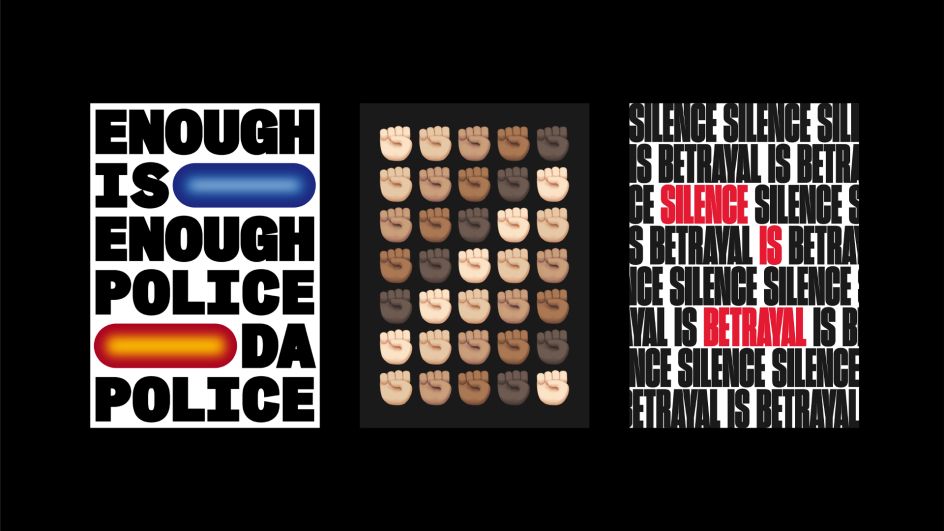
Signs of Change, Craig Berry poster designs
How does that then translate into your work?
It's about finding different ways to feel inspired. Visual stimulation. Seeing something amazing and then having that burst of energy to return to the desk and be motivated to make something cool. It's also healthy to break away from your usual diet of design. If all graphic designers just looked at their own field all day, everything would look pretty alike and boring. When you look at different references, things start to get interesting. My wife is a dancer and choreographer. I'm so inspired by how she interprets music into dance.
Do you ever get overwhelmed by London?
I think when I moved here, yes. I had that feeling. Not just being part of a great design scene. But just being part of such a huge city can be quite daunting. But once you break through that, you burst that bubble and can only feed off that energy. You have to embrace being out of your comfort zone, definitely.
What advice would you give to designers just breaking into the industry?
Take every opportunity that comes your way. Don't be afraid or worry about whether things will work out. If you start thinking about it too much, you're just going to scare yourself. I never intended to move to Amsterdam, but it was something I couldn't turn down. Certain things happened there that I would never have experienced if I hadn't been open-minded and willing to take a chance. Say yes, even if it terrifies you. You never know where things might take you.
](https://www.creativeboom.com/upload/articles/aa/aa67bf5f43475f6536b97685d5221ab497d91b6f_944.jpg)

















